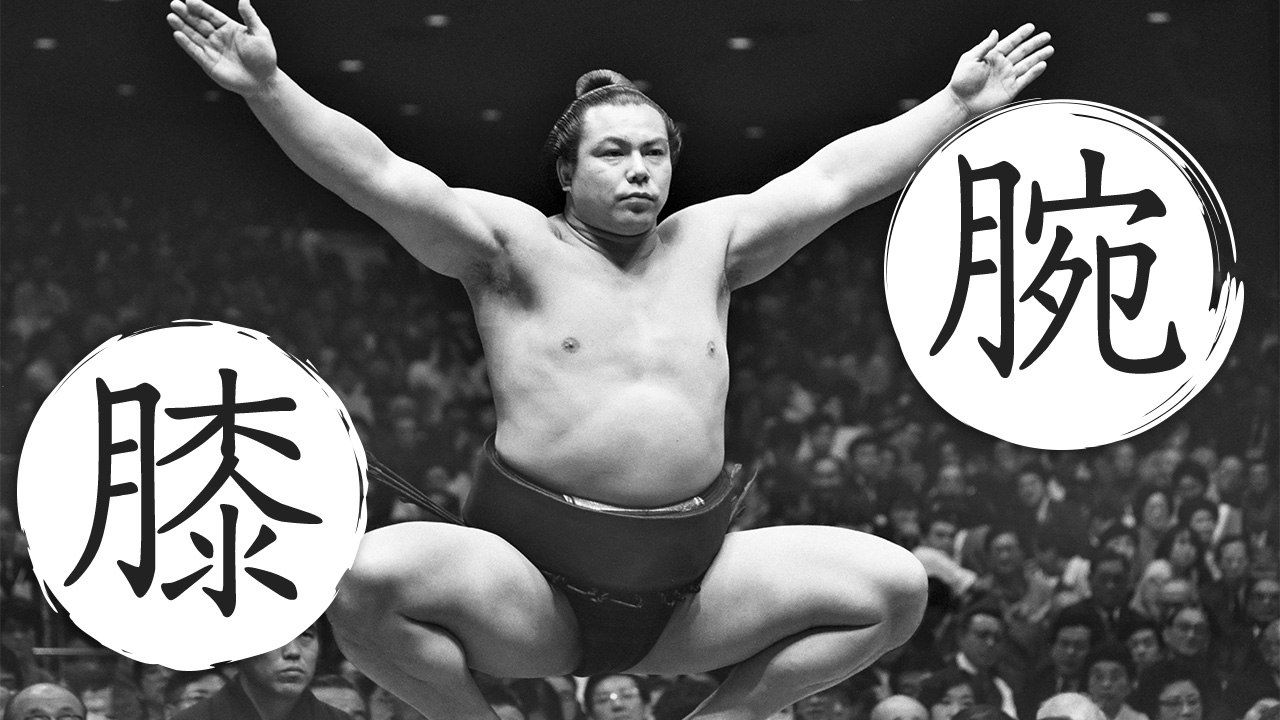
Learning and Loving the Japanese Language
Body Language: Kanji with the Meat-Moon Radical (月)
Language Culture- English
- 日本語
- 简体字
- 繁體字
- Français
- Español
- العربية
- Русский
The “meat-moon” radical 月 can be found in many kanji connected with the body. It gets its name (nikuzuki in Japanese), because these characters are associated with niku, meat or flesh (肉), but their radical—a simplified form of the character—is the same as tsuki, “moon” (月). Once, these two radicals were differentiated, but the similar appearance of 肉 and 月 when reduced in size as part of a kanji has led to 月 being used to represent both.
The most common characters with the “meat-moon” radical appear below, and there are also lists providing pronunciations. Incidentally, there is one kanji where 肉 remains unchanged as a radical: 腐る (kusaru) means to “rot,” and is often used for food, including meat, as well as other items like fish and milk.
The Body Inside and Out
While the most basic body vocabulary does not tend to use the radical, such as the head (頭; atama) or hand (手; te), there are many body parts that do among the standard 2,136 jōyō kanji. For example, there are the shoulder (肩), chest (胸), back (背), lower back or waist (腰), and belly or stomach (腹), as well as the arm (腕), elbow (肘), and armpit (脇). The kanji 股 can represent the “crotch” or “inner thighs,” while 膝 means “knee,” but can stand for the “lap” a pet might sit on, too. There are also torso (胴) and limb (肢); the latter is commonly seen as part of the word for choices or options (選択肢) as well.
Going below the surface, we can find brain (脳), lung (肺), and 脊, which is part of the word for spine (脊椎). The kanji 胃 means the “stomach” as an inner organ; there is some overlap with the more casual 腹 mentioned above, which can refer to both the belly as seen from outside, as well as the actual stomach. Nearby are the intestines (腸). One useful kanji while we are inside the body is 臓, with the compound 臓器 meaning “organ.” This character appears in heart (心臓), and is combined with other common kanji in the “meat-moon” group in liver (肝臓) and kidney (腎臓).
The character 胆 represents “gallbladder” (胆嚢), but is actually more regularly seen in its meaning of “courage” in words like “bold” (大胆) and “discouraged” or “disappointed” (落胆). The kanji 胎 represents the uterus or fetus, and is most often seen in the compound 胎児 (fetus); note, though, that it does not appear in the most common word for “uterus,” which is 子宮 (shikyū). There is also 脈 or “pulse,” which is part of 静脈 (vein) and 動脈 (artery). Rounding things off, “skin” in Japanese can be the casual 肌 or the more scientific 皮膚, “fat” as a noun is 脂肪, and “cell” is 細胞.
Body I
| 肩 | shoulder (kata) |
| 胸 | chest (mune) |
| 背 | back (se) |
| 腰 | lower back/waist (koshi) |
| 腹 | belly/stomach (hara) |
| 腕 | arm (ude) |
| 肘 | elbow (hiji) |
| 脇 | armpit (waki) |
| 股 | crotch/inner thighs (mata) |
| 膝 | knee/lap (hiza) |
| 胴 | torso (dō) |
| 肢 | means “limb”; rare as single kanji |
| 選択肢: options (sentakushi); 四肢: (four) limbs (shishi) |
Body II
| 脳 | brain (nō) |
| 肺 | lung (hai) |
| 脊 | means “spine”; rare as single kanji |
| 脊椎: spine (sekitsui) | |
| 胃 | stomach (i) |
| 腸 | intestines (chō) |
| 臓 | means “organ”; rare as single kanji |
| 臓器: organ (zōki); 心臓: heart (shinzō) | |
| 肝 | liver (kimo); less common as single kanji |
| 肝臓: liver (kanzō); 肝心: essential (kanjin) | |
| 腎 | means “kidney”; rare as single kanji |
| 腎臓: kidney (jinzō) | |
| 胆 | means “gallbladder” or “courage”; rare as single kanji |
| 胆嚢: gallbladder (tannō); 大胆: bold (daitan); 落胆: disappointed (rakutan) | |
| 胎 | means “uterus” or “fetus”; rare as single kanji |
| 胎児: fetus (taiji) | |
| 脈 | pulse (myaku) |
| 静脈: vein (jōmyaku); 動脈: artery (dōmyaku) | |
| 肌 | skin (hada) |
| 膚 | means “skin”; rare as single kanji |
| 皮膚: skin (hifu) | |
| 脂 | fat, grease (abura) |
| 樹脂: resin (jushi) | |
| 肪 | means “fat”; rare as single kanji |
| 脂肪: fat (shibō) | |
| 胞 | means “placenta”; rare as single kanji |
| 細胞: cell (biology) (saibō) |
(Originally written in English. Banner photo: Sumō wrestler Chiyonofuji in January 1989 with the kanji for knee and arm. © Jiji.)




